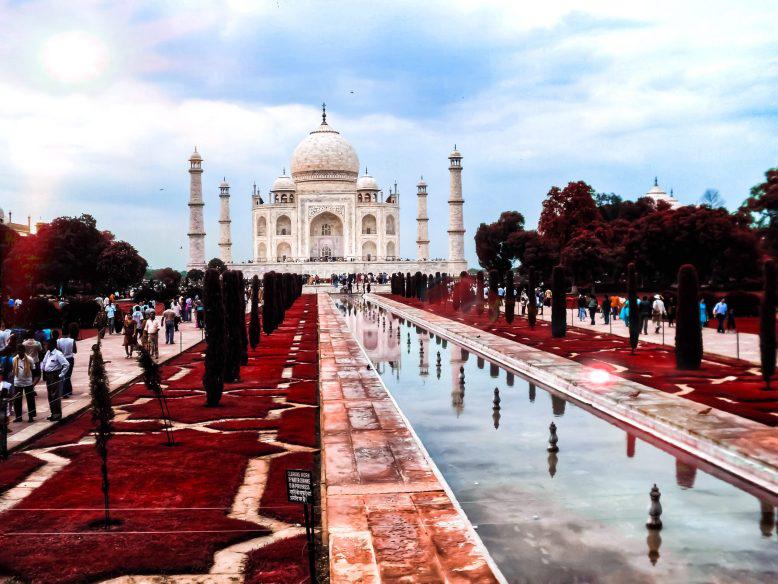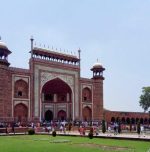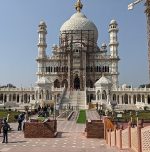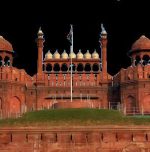The original name of the Taj Mahal

Before the world knew it as the Taj Mahal, this magnificent monument had a different name, “Rauza-i-Munawwara,” meaning “Illuminated Tomb” in Persian.
During its early construction in the 1600s, this was the name used for the grand mausoleum that Mughal Emperor Shah Jahan built in memory of his beloved wife, Mumtaz Mahal.
Over time, it became famous as the Taj Mahal, but its original identity remains an important part of history.
The construction of Rauza-i-Munawwara began in 1632 AD, and the main structure was completed by 1648 AD.
However, additional features, including the mosque, guest house, and the southern gateway, were added later, finishing in 1653 AD.
This masterpiece blends Persian, Ottoman, Indian, and Islamic architectural styles, showcasing the finest craftsmanship of the Mughal era.
Shah Jahan brought together the best artisans from India, Persia, and Central Asia to build this breathtaking monument.
The structure was made using Makrana white marble, adorned with precious stones like jade from China, turquoise from Tibet, and sapphire from Sri Lanka.
The walls were intricately carved with floral patterns and Quranic inscriptions, adding to its artistic brilliance.
The cost of constructing Rauza-i-Munawwara was around ₹32 million, a vast sum in those times.
The emperor ensured that no expense was spared in creating a symbol of eternal love and devotion. Its symmetrical gardens, reflecting pools, and minarets make it one of the most breathtaking monuments in the world.
The UNESCO declared the Taj Mahal a World Heritage Site in 1983. Recognized as one of the Seven Wonders of the World, it remains an enduring marvel.
The monument’s stunning beauty and precise craftsmanship make it an unforgettable sight.
Even though the name Rauza-i-Munawwara is rarely used today, its meaning is the Illuminated Tomb. It perfectly describes the way this monument glows under sunlight and moonlight.
Though history renamed it, the essence of love, loss, and remembrance remains unchanged.
The Taj Mahal, once Rauza-i-Munawwara, continues to be a symbol of undying love and architectural brilliance.
Image by Neeraj from Pixahive (Free for commercial use / CC0 Public Domain)
Image Published on January 14, 2021
You may also like
Image Reference: https://pixahive.com/photo/the-taj-mahal/
Recent Posts
- SBI opens applications for Specialist Cadre PostsSBI will follow a structured selection process for these vacancies.
- New tax rules: Will cigarettes and pan masala get costlier?The Central Excise (Amendment) Bill, 2025, replaces the current compensation cess on all tobacco products.
- Ludic steps up with a playful, comfortable slider collectionThe Indian footwear market continues to evolve as young startups bring fresh ideas and bold design philosophies. Ludic, a footwear-first lifestyle brand, stands out in this space with its playful…
- SBI opens applications for Specialist Cadre Posts
What’s new at WeRIndia.com
News from 700+ sources
-
When Amitabh Bachchan took fans back to 1990s Russia
-
US Supreme Court to Weigh Trump Bid to End Birthright Citizenship
-
Louisiana AG Murrill Tells New Orleans Top Cop: You Cant Refuse to Help ICE, CBP
-
Dhurandhar becomes 2025’s 2nd highest opener, BEATS Saiyaara
-
Lifestyle habits that may secretly harm prostate health and increase urinary problems in men over 40
-
Federal Judges Are Now a Form of Tyranny, Warns Former Litigator
-
WeRIndia – A News Aggregator
Visit werindia.com for all types of National | Business | World | Politics | Entertainment | Health related news and much more..









